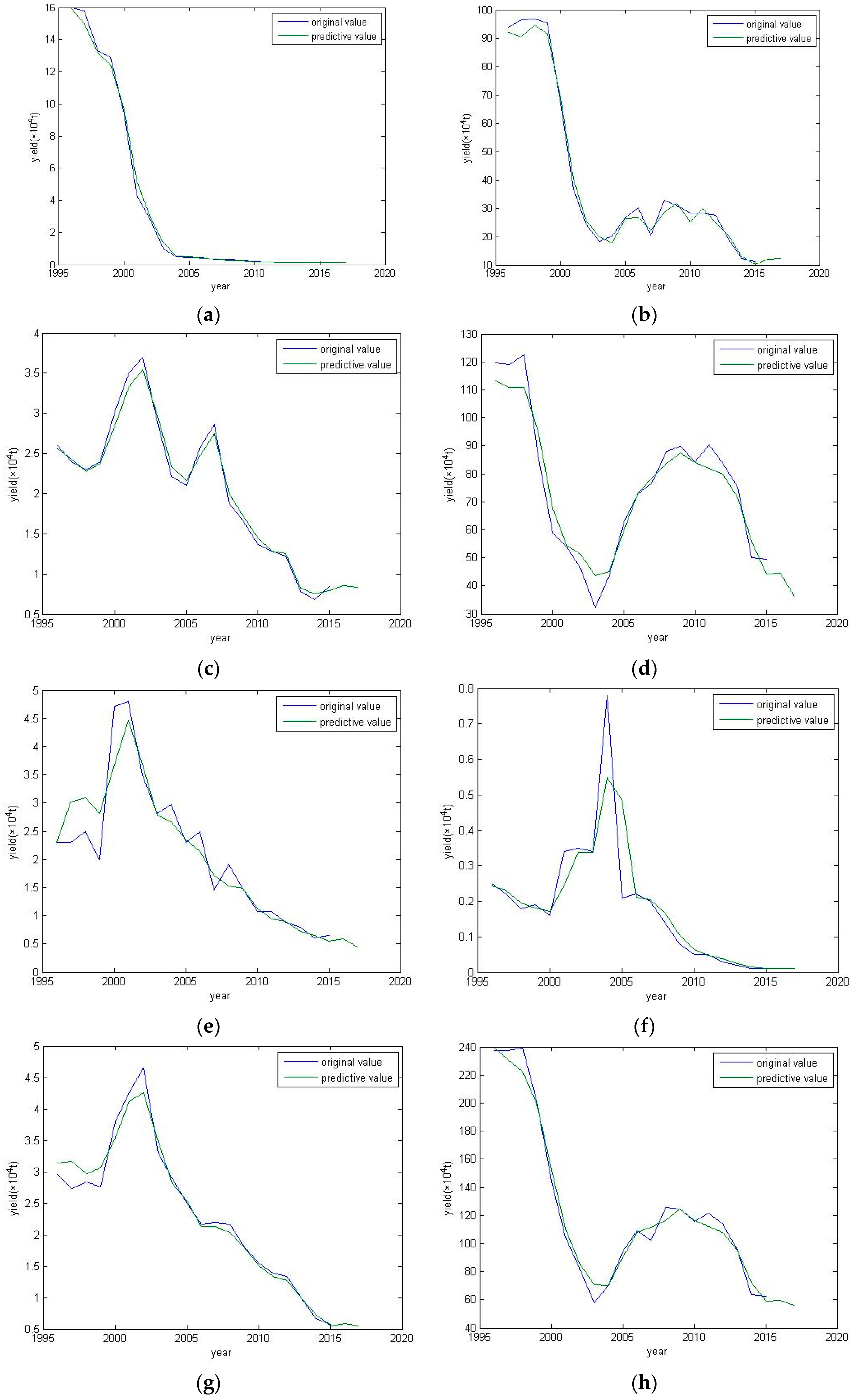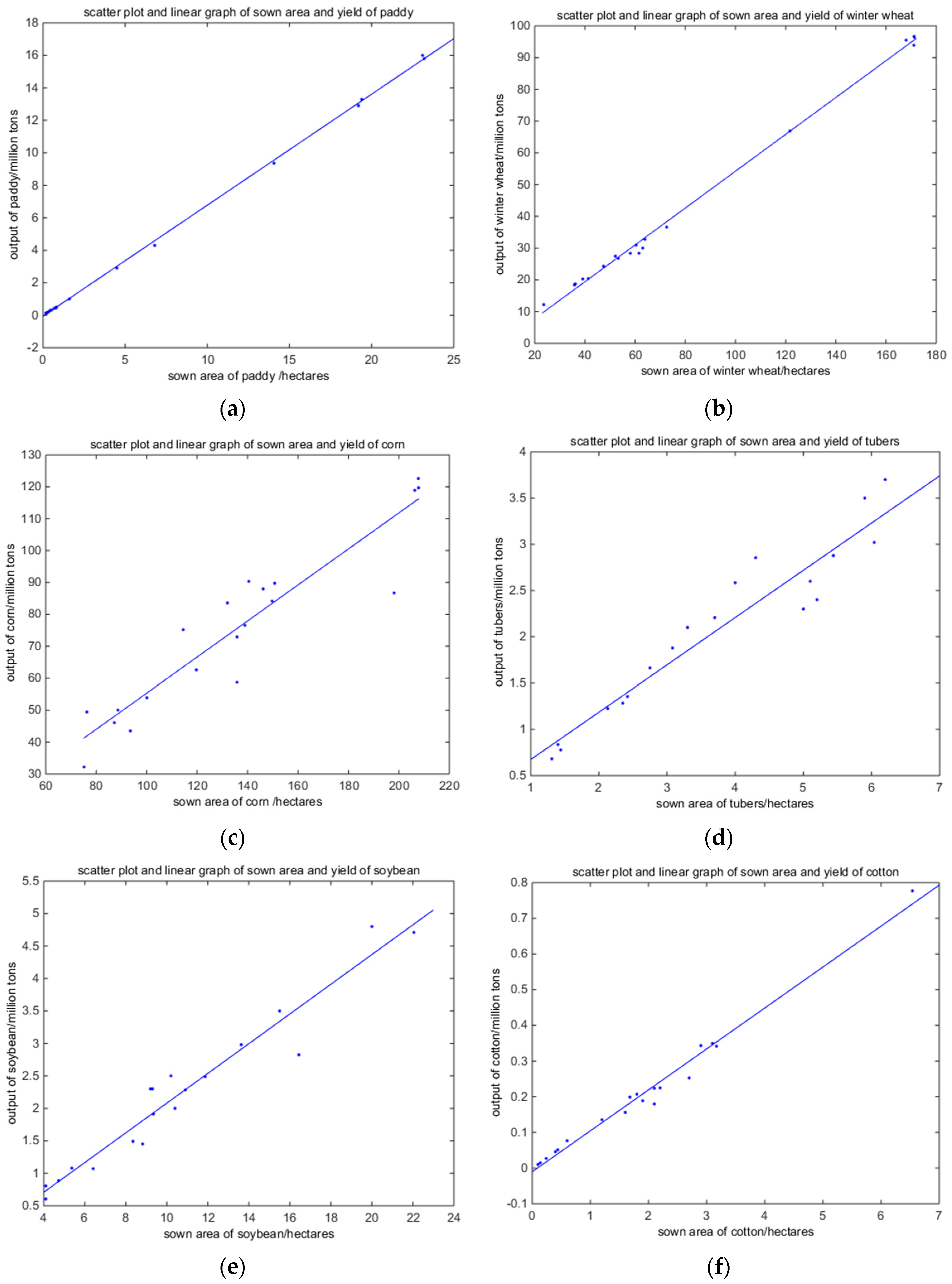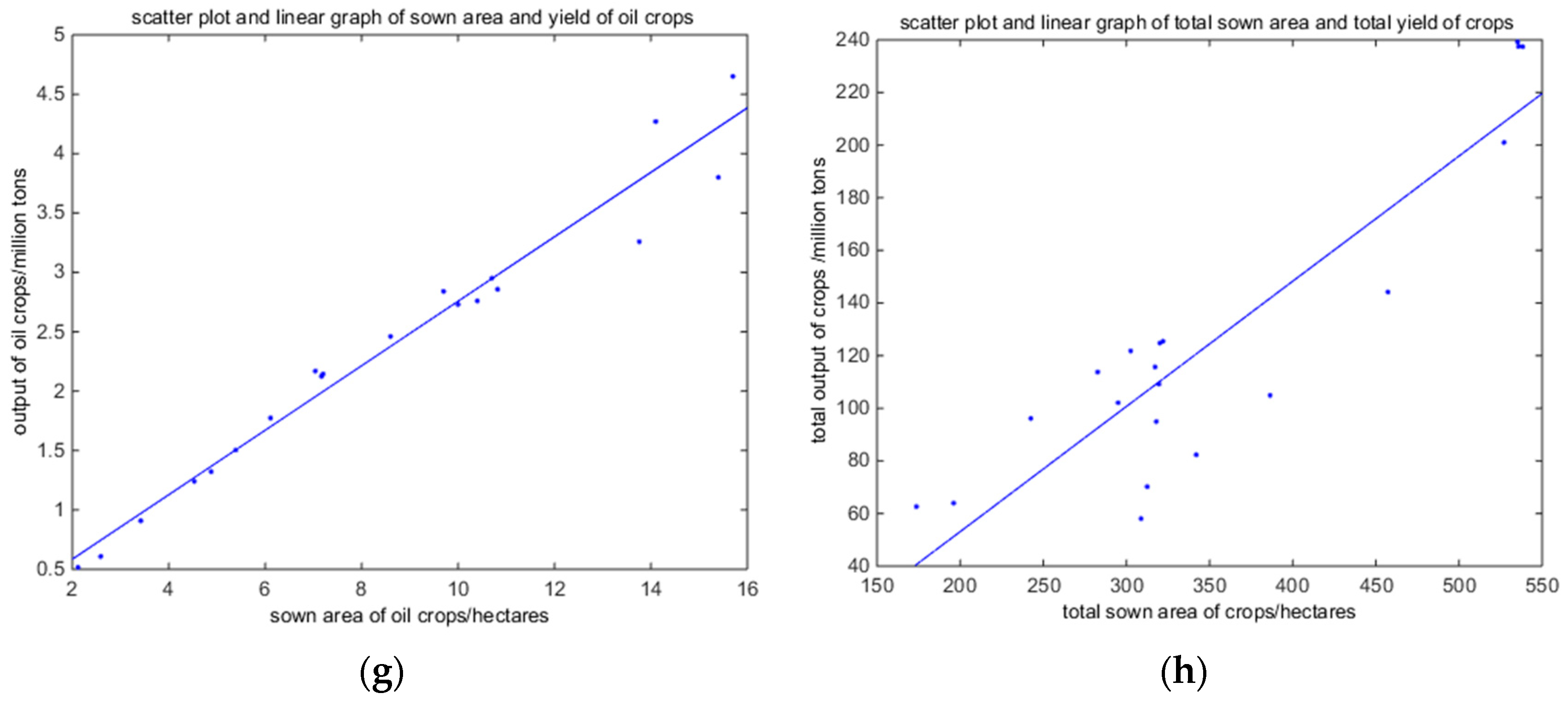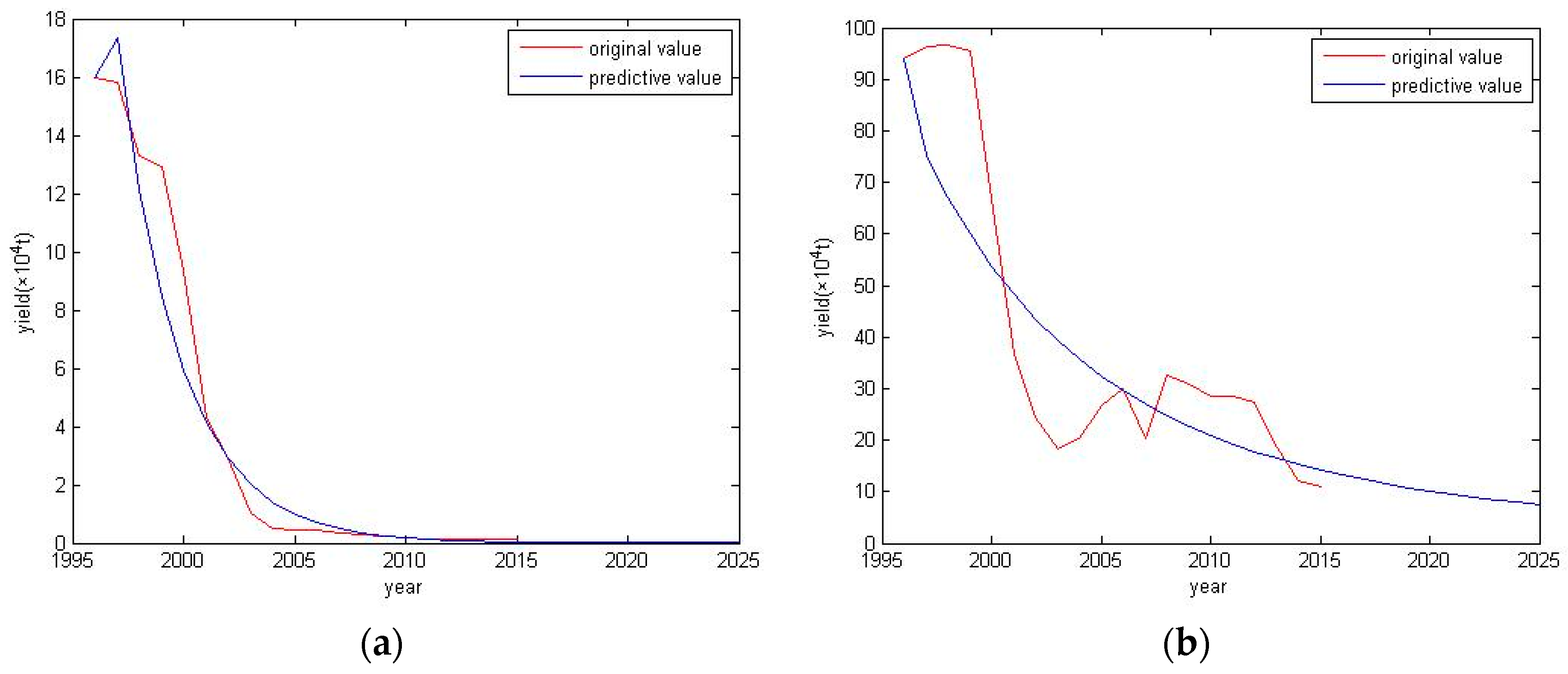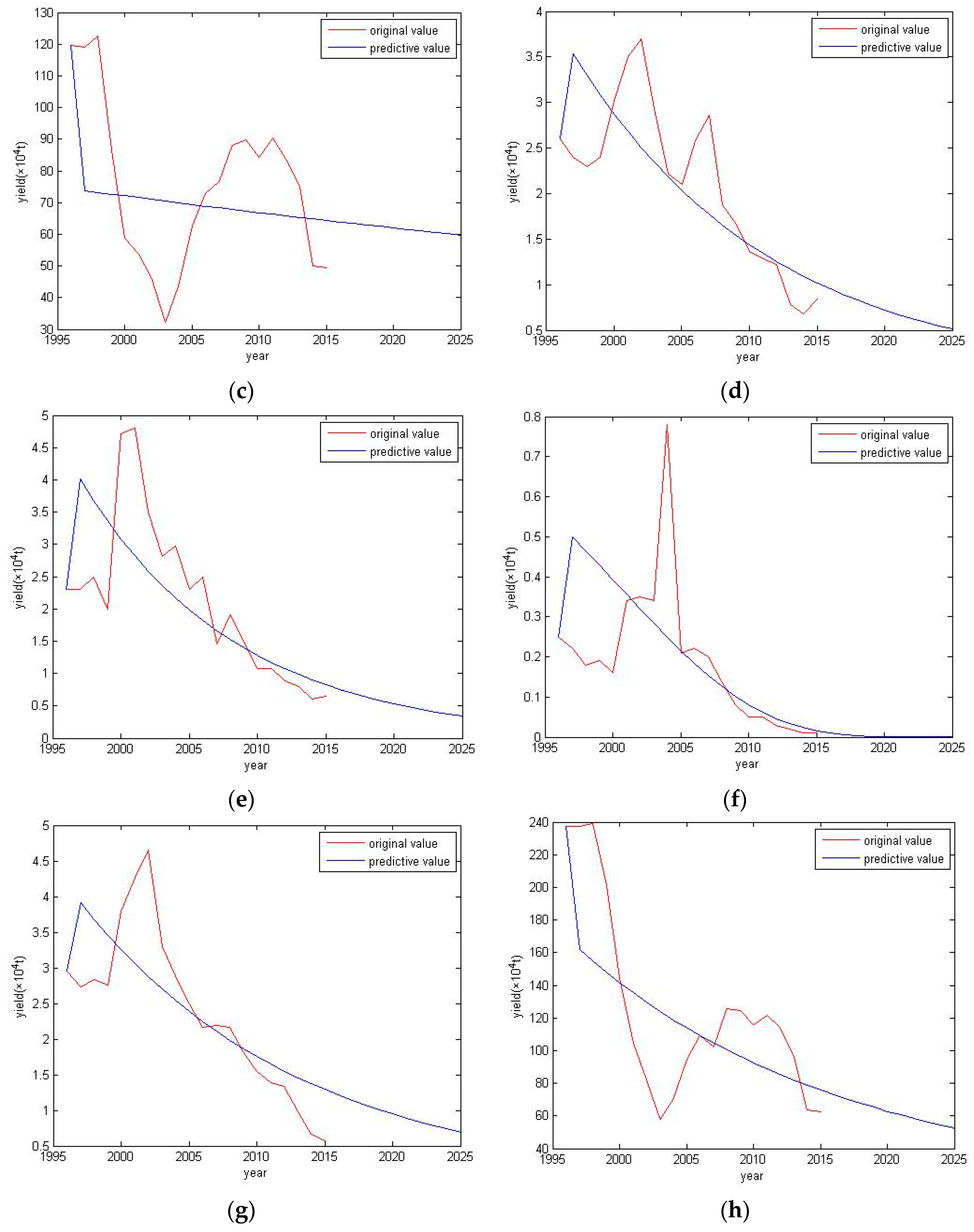1. Introduction
Biomass, as an important alternative energy source to conventional fossil fuels, has received major interest in recent years due to the progressive exhaustion of fossil fuels and the continually increasing demand for energy on a global level [
1]. Biomass has a high potential to reduce greenhouse gas emissions while minimizing environmental pollution [
2]. However, the amount of biomass supplies presents a large degree of uncertainty due to raw material cost fluctuations, variations in biomass seasonality and so forth. In order to evaluate the feasibility of introducing biomass-derived energy applications, it is necessary to conduct an assessment of the resources and their availability [
3].
As one type of renewable energy, agricultural residue has been widely seen as an effective substitute for conventional fuels such as petroleum, gas and coal [
4,
5]. Collection of agricultural waste for bioenergy use and promotion is one of the most important state affairs [
6,
7]. Various methods have been proposed on the availability of different biomass resources in the literature. Gonzalez-Salazar et al. proposed a new method to determine key variables by using sensitivity analysis and probabilistic propagation of uncertainty and the method was applied to energy scenarios in Colombi. The proposed method significantly reduced the predicting uncertainty of both theoretical and technical biomass potential [
8]. Maqhuzu et al. devised a quantification method that included the application of a probability distribution to strictly handle the uncertainty when quantifying the biomass and was simulated 100,000 times with the Monte Carlo method. The results showed a lower potential than previous estimates by employing the stochastic model instead of deterministic models [
9]. Moreover, an integrated assessment method for understanding the availability and utilization potential of different biomass resources was presented by Hossenet et al. [
10]. A novel feature of the developed method is the unconventional quantitative assessment of major biomass resources, which were previously ignored [
10]. Welfle et al. determined the most promising indigenous biomass resources for the UK bioenergy industry and assessed the impact of different supply chain drivers on biomass availability with “A Biomass Resource Model,” which can simulate the whole system dynamics of biomass supply chains [
11]. Vávrová et al. proposed an integrated method for empirical data (GIS) and detailed spatial data to assess both standard and additional biomass potential. The results showed that biomass potential from forest land and agriculture can be increased significantly in the short term [
12]. According to the state of the technology, by defining explicit and rationale restrictions on sustainable bio-energy industry, Burg et al. estimated the potentially available woody and non-woody biomass resources for bioenergy in Switzerland using bottom-up approaches, which can be transferred to other study areas based on the local situation and available data [
13]. Zhang et al. first used a quantitative universal exergy to evaluate the woody biomass potential and its impact on the environment [
14]. Brahma et al. proposed a species-specific power-law model for rubber trees, which predicted biomass availability more precisely than universal models [
15]. Chinnici et al. evaluated the potential available quantities of five types of agricultural waste in Sicily. The evaluation was based on statistics by applying parameters derived from the literature and direct research [
1].
There are many proposed models and prediction models used for the assessment of potential biomass energy production in China as well. Ji conducted an assessment of agricultural residue resources and forecast the corresponding theoretical output in the near future using an artificial neural network (ANN) model for liquid biofuel production in China [
16]. Zhao predicted the potential biomass production from 2030–2050 in China, based on the resource availability of five sources: agricultural crop residues, forest residues and industrial wood waste, energy crops and woody crops, animal manure and municipal solid waste [
17]. Zhang et al. established the Long-range Energy Alternative Planning System (LEAP)-Beijing model for the medium-to-long-term greenhouse gas (GHG) emissions prediction in Beijing [
18]. Hao et al. reviewed the current status, future potential and policy implications of biofuel for vehicle use in China [
19]. Qin et al. performed a review of bioenergy resources from existing conventional crop (e.g., corn, wheat and rice) residues and energy crops (e.g., Miscanthus) and the impacts of biofuel production on ecosystem services based on the biofuel’s life cycle analysis [
20]. Chen employed a mathematical programming model to estimate the economic potential of biomass supply from crop residues in China. The results showed that the crop residues supply relies on the yields and production costs of crop residues and biomass prices [
21].
Agricultural residues play an important role in China’s biomass feedstocks because China is a vast agricultural country. However, direct combustion is still the main use of agricultural residues, especially in China’s rural areas. The ineffective use of agricultural residues leads to many problems. This study analyses the availability of agricultural biomass for energy use in Beijing, China, and in particular to be used for the production of biofuel. Advanced modeling methods, including the Time Series Analysis ARMA model, Least Squares Linear Regression and Gray System GM (1,1), are used for the prediction of biomass.
4. Conclusions
A multitude of security concerns and societal issues, including heavy air pollution, climate change and high dependence on crude oil imports, have stimulated research into finding substitutes from renewable biomass. China, as the biggest agricultural country in the world, has abundant biomass from agricultural residues, which will play an important role in meeting liquid fuel demand in China, especially with the passing of China’s legislative targets for renewable portfolio standards. In this study, an assessment of current and near future agricultural residues from crop harvesting and processing resources in Beijing, China, was performed by employing three advanced modeling methods. The theoretical and collectable amount of agricultural residues was calculated. The results show that the time series model prediction is suitable for short-term prediction evaluation; the least squares fitting result is more accurate but the factors affecting agricultural waste production need to be considered; the gray system prediction is suitable for trend prediction but the prediction accuracy is low. The quantitative appraisal of available biomass lays out conditions for future studies on estimating the energy obtainable and for assessing the feasibility of using agricultural residue biomass available as an alternative energy source.
